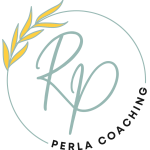“What the world needs now is love, sweet love
It’s the only thing that there’s just too little of
What the world needs now is love, sweet love,
No, not just for some but for everyone.”
Burt Bacharach and Hal David

Jackie DeShannon soulful rendering of this song, written in 1965, transported listeners for a few minutes – to feel lighter, breath easier and to imagine the possibilities of love. In the 1960’s, our nation was just beginning a large shift of consciousness that was felt in vast social, historical and political shifts. As the negative emotion felt by the anger of change grew, some thought that increasing our ability and capacity to love was the answer. However, back then, science had few tools for studying positive emotions like Love. Instead this emotion found expression and calibration through artists and songwriters.
Fast forward to the 21st century: our world still needs more love, more positive emotion expression. Science can now observe and collect clear data on how we express positive emotions like love… the greatest positive emotion. Advances in science give scientists this opportunity – neuroimaging of the brain, as well as the tools of medicine that allow us to measure neural activity and hormone secretion.One of the most exceptional social scientists on the scene today, Dr. Barbara Fredrickson, a distinguished Professor from the University of North Carolina, has written a compelling, cogent and warm-hearted book, called Love 2.0, How our Supreme Emotion Affects Everything we Feel, Think and Do. A gifted writer, she is able to interpret the hard data experiments that she and other scientists have done on the subject, interpreting and combining it with her own experiences, and at times poetical words to challenge us to consider a new definition of love: she calls it positivity resonance.
Love, she posits, is not just the stuff of lovers/married folks/parents and children…this emotion she renames “positivity resonance” can happen with strangers—even for a few minutes. Dr. Fredrickson’s research show that love is connection and therefore is:
“…The momentary upwelling of three tightly interwoven events: first a sharing of one or more positive emotions between you and another; second, a synchrony between your and the other person’s biochemistry and behaviors; and third, a reflected motive to invest in each other’s well-being that brings mutual care.”
A familiar example of what she describes as a “micro-moment of positivity resonance”: imagine waiting in an airport and casually telling a story with a stranger sitting next to you and, before you both know it you are laughing, even sharing similar life events, feeling lighter, more relaxed. Forgetting that the plane is 2 hours delayed, you are enjoying the brief exchange, where by the way, you not only make the time go faster, meet a kindred soul, but share a few traveling tips as well. That Barbara Fredrickson says is love… or positivity resonance. She has chapter after chapter of describing her own and other’s research showing changes in the brain, vagus nerve, respiration and one’s hormonal level during such positive emotion exchanges which gives proof of how love does indeed calm and connect us with ourselves and others.
So why is this important in living, relating and working?
We now know by Dr. Fredrickson’s own research as well as other research completed by Drs. Marcial Losada in mathematics and John Gottman in marriage – that there is a 3:1 tipping point of positive to negative emotion at which point, when experienced, people begin to flourish. At work that means we then can begin to interact with co-workers creating higher team productivity, smoother communication and more successful client interactions.
This research shows that negative emotion narrows our awareness (“fight or flight”) and positive emotion broadens our perspective (“calming and connecting”) which results in more creative thinking and some studies show, a higher IQ after interacting with someone in a positive way.
In the workplace, this could mean: creative breakthroughs, more flexible problem solving, and increased resilient behavior that allows for a broader array of skills to deal with difficulty, disappointment and loss. Dr. Fredrickson describes this as the ability of positive resonance to “unlock collective brainstorming power.” She even outlines a meditation practice that leads you to “re-designing your job around love.”
The book also gives myriad resources and tools on practices to increase positive emotion, particularly borrowing from the Tibetan tradition of Loving Kindness meditation.
She has crafted a most informative website: www.positivityresonance.com which offers tools, videos and a series of mp3 meditations, in her own voice, that you can practice and a few from some more famous meditation masters like Sharon Salzberg. As we strive to increase our positive emotion so that we can move toward flourishing in our work and life, Dr. Fredrickson’s book is a must read.
References:
Love, 2.0, Barbara L. Fredrickson, PH.D, Hudson Street Press, 2013
www.Positivityresonace.com – Dr. Fredrickson’s website on Love 2.0 that has many tools and meditations available for listening.
Fredrickson, B.L., Losada, M.F., “Positive Affect and the Complex Dynamics of Human Flourishing” American Psychologist, October 2005. This article is available on a Google search.
Gottman, John. Why Marriages Succeed or Fail: And How You Can Make Yours Last, Simon and Schuster. 1994


